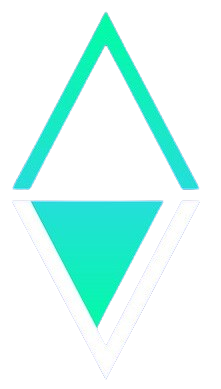Exploring the World of NFT Marketplaces: How Blockchain Redefines Ownership
In the constantly evolving domain of digital ownership, Non-Fungible Tokens (NFTs) have emerged as transformative assets. They offer provable scarcity, unique value, and verifiable authenticity for digital goods. At the heart of this revolution is blockchain technology, which ensures the integrity and success of NFTs. As NFT adoption accelerates, the demand for robust NFT marketplace development services that are secure, scalable, and feature-rich continues to rise. Let’s dive into the intricate details of NFT marketplaces and the pivotal role blockchain plays in this exciting digital frontier.
What is an NFT Marketplace?
An NFT marketplace is a decentralized platform where users can mint, trade, and exchange non-fungible tokens. These tokens serve as distinct digital representations of a wide variety of items, including digital art, music, domain names, and even virtual real estate in the metaverse. Unlike traditional marketplaces, NFT marketplaces prioritize user autonomy and transparency through decentralized protocols.
- Unique Minting: Each NFT is minted as a one-of-a-kind token on the blockchain, making replication impossible.
- Trustless Interactions: Marketplaces foster trustless spaces where creators and collectors can engage directly.
- Direct Connectivity: Users can connect via cryptocurrency wallets, eliminating the need for central intermediaries.
These platforms are not just marketplaces; they cultivate ecosystems grounded in decentralization, authenticity, and security.
Blockchain: The Underlying Infrastructure
Blockchain functions as the immutable, decentralized digital ledger that facilitates all NFT activities. It records each transaction on a distributed network, ensuring data integrity, traceability, and resistance to censorship.
- Permanent Storage: Every NFT is timestamped and securely stored on-chain.
- Instant Verification: Ownership can be verified instantly without the need for a central authority.
- Provenance Tracking: Each transaction contributes to an asset’s provenance, offering a transparent history.
By leveraging blockchain, users can navigate a trustless environment where authenticity and fairness are upheld by the system itself.
Decentralized Control and True Ownership
Historically, centralized platforms have governed users’ data and rights to content. Blockchain disrupts this paradigm, granting users full control over their assets and identities.
- Private Wallets: Users maintain their assets within wallets secured by cryptographic keys, enhancing privacy.
- Access Rights: No third party can confiscate or block access to owned NFTs.
- Inherent Autonomy: Both creators and collectors benefit from enhanced transparency and immutability.
This shift in control is redefining ownership and its implications within the digital landscape.
Security and Trust
Online systems that deal with valuable digital assets must prioritize security. Blockchain’s architecture enhances security through cryptographic protocols and consensus algorithms.
- Encrypted Transactions: All transactions are encrypted, traceable, and transparent to users.
- Fraud Prevention: Issues like double-spending or tampering are nearly impossible due to distributed validation.
- Immutable Records: Once transactions are recorded, they cannot be altered retroactively, ensuring a persistent and trustworthy record.
This heightened level of security is vital for establishing credibility within NFT marketplaces, especially as the ecosystem continues to evolve.
Smart Contracts: Securing the Ecosystem
Smart contracts are automated scripts embedded in the blockchain that execute predetermined actions based on specific conditions. Their role is crucial for the functioning of NFT marketplaces.
- Automated Processes: Smart contracts handle NFT minting, royalty payments, and ownership transfers seamlessly.
- Royalty Clauses: Artists can embed permanent royalty clauses in NFTs, ensuring they receive income from future sales.
- Manual Interference Reduction: Peer-to-peer exchanges occur without the need for manual intervention or intermediaries.
Smart contracts enhance efficiency, transparency, and trust by automating processes and reducing the potential for human error, thereby enriching user experiences.
Scalability and Interoperability in NFT Marketplaces
As interest in NFTs grows, it is essential for underlying blockchain platforms to accommodate higher transaction volumes and diverse use cases. Blockchain technology facilitates this through multichain support and cross-platform interoperability.
- Diverse Blockchain Ecosystems: Prominent chains like Ethereum, Solana, and Polygon offer unique advantages, ranging from cost-effectiveness to rapid transaction confirmations.
- Layer 2 Solutions: Technologies like Arbitrum and Optimism enhance scalability without compromising decentralization.
- Cross-Chain Compatibility: Enhanced liquidity and reach between different ecosystems create a more integrated marketplace.
These capabilities ensure that NFT marketplaces can adapt and thrive in a rapidly changing digital landscape.
In this innovative age, blockchain remains the cornerstone of NFT marketplaces, amplifying digital ownership while fostering security and transparency. The exploration into NFTs continues to unlock new opportunities for creators, artists, and entrepreneurs, ushering in a future where digital assets hold significant value just like their physical counterparts. Would you be ready to engage with this decentralized future?



